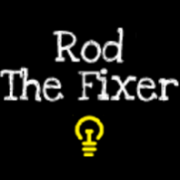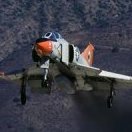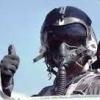Search the Community
Showing results for tags 'P-51D/K'.
-
Hi everyone, I started to assemble this Airfix kit: by Rodolfo Masti, on Flickr to make this aircraft: Source: 3 Squadron - Australian Flying Corps / Royal Australian Air Force A brief history: In early April 1945 'Dusty' Lane claimed one of No 3 Sqn RAAF's few victories on the Mustang III/IV when he shot down an Fi 156 over Yugoslavia. He flew KH676 regularly throughout the latter part of the month, including twice on the 25th in attacks on canal lock gates. The following day Lane attacked a ferry crossing in it, despite being opposed by heavy flak. The Mustang 111/IVs of No 3 Sqn RAAF proclaimed their Australian ownership by having their fins painted blue,onto which the unit applied the stars of the Southern Cross. A quick look inside the box: by Rodolfo Masti, on Flickr by Rodolfo Masti, on Flickr by Rodolfo Masti, on Flickr by Rodolfo Masti, on Flickr by Rodolfo Masti, on Flickr Eduard cockpit box contents: by Rodolfo Masti, on Flickr Main part of cockpit assembled by Rodolfo Masti, on Flickr by Rodolfo Masti, on Flickr by Rodolfo Masti, on Flickr by Rodolfo Masti, on Flickr
-
Mustang Mk.IV ProfiPACK (82104) 1:48 Eduard The P-51D was developed by the North American Aviation company as a possible fighter for Great Britain, but due to the poor performance of the original Allinson engine it wasn’t all that good, especially at high altitude. Luckily they decided to try strapping a Rolls-Royce Merlin engine to the airframe and it brought out the best of its design, which included the energy efficient laminar flow wing that gave it the potential to escort Allied bombers all the way to Berlin with the addition of drop-tanks and a lean mixture when not in combat. It was flown in this guise as the Mustang III in British service, and as the P-51B/C in US service, then as the P-51D with the bubble canopy and cut-down aft fuselage, with an additional fin-fillet added later to improve stability that had been reduced by the new shape and fuel tank location. In British service it was known as the Mustang Mk.IV, and the same variant made at the Dallas factory with hollow AeroProducts props that was designated P-51K in US service was known as the Mk.IVa in RAF service to differentiate. Sadly, the hollow prop was prone to vibration thanks to some inferior quality control at the factory, so was often swapped out in the field. The P-51D is the Mustang that most people think of when they hear the name, unless they’re more of a petrol head or a bit horsey. The Kit We were treated to the ProfiPACK, Royal Class and Weekend forms of this new tooling and now it’s everyone’s favourite Mustang in 1:48 (with good reason), with an increasing number of variants with filleted and unfilleted tails differentiating them. We’re now able to get our grubby mitts on an RAF boxing, which includes a nice decal sheet with 6 markings options. Inside the box are five sprues in blue/grey styrene, a clear sprue, a fret of Photo-Etch (PE) brass with nickel-plating and much of it pre-printed both in colour and with domed clear instrument faces, two decal sheets and a thick instruction booklet with the markings options printed in the rear in colour. Construction begins with the seat, which is built up first with PE belts, then the cockpit floor, tanks and radio gear are added in, with sidewall framework dotted with PE parts on both sides. It shapes up to be a well-detailed cockpit, and the PE parts are numerous and impressive. The tail-wheel bay is made up, the radiator pathway and a spinner backing-plate are all slipped into the fuselage along with a PE grille and exhaust backing panel before they are closed up. The wheel bays are built up next with some advice regarding colour added along the way, splitting the bay down the middle and bracketing it front and back with bay walls that have partial ribs added once in place. This assembly is fitted to the full-width lower wing and joined by backing panels to the spent brass chutes, a central insert that shows through the bay, and a clear part for the identification lights. The wing uppers go on and the ailerons fit into tabs in their recesses, with some room for offsetting if you wish. On the leading edge is an insert for the guns, and you’ll need to fill a few panel lines under the nose. There are also a complement of holes that will need opening up if you’re fitting drop-tanks, so have a pin vice to hand. The wings are mated to the fuselage, and tiny clear wingtip lights are slotted in on long stalks, then the tail fins are begun. The filleted fin is a separate insert and the elevator fins with their metal flying surfaces are inserted into slots horizontally, while the rudder can be fitted at any sensible angle. You may have noticed the lack of comments about the instrument panel during building of the cockpit, but we’re getting to it now. The finished coaming and rudder pedals drop into the fuselage, but are first decked out with a multi-layered instrument panel made from pre-painted PE, with those glossy instrument dials we've come to expect from Eduard. The two radiator doors under the tail are fitted at the same time as the tail wheel, with bay doors and PE closure mechanism added along the way, with a scrap diagram showing the correct orientation. Inside the main bay a pop-up landing light is slotted into its mounting point, a PE divider is added to the exhaust intake lip, and chin-scoop plus the correct panel under the nose (decal choices again), then it’s on to the main gear legs. The tyres are diamond tread, with wheels and hub caps added before they’re fitted to the struts, which have separate styrene scissor-links and door supports slotted into place. The flaps are each made up from two styrene parts with a tiny piece of PE added to the inner end of each one and a decal on the curved leading edge after painting. You’ll have to remember to add these yourself, as I won’t! Those are all slotted in place on the underside along with the rest of the bay doors, and at that point you can sit her on her wheels and add the appropriate exhaust stacks. The prop is made from two paired blades that fit perpendicular to each other in a choice of two types of blades and spinner, canopy with interior structure, a backup ring and bead sight. There’s also an aerial on the spine behind the canopy. The weapons and drop tanks are last to be made, with a choice of two tank types that all share the same type of pylon, while a few spares are left on the sprue, including a set of six rockets under the wings, which have separate tails and moulded-in launch-rails and would be fitted three per side. Markings By now you should have your decal choice locked in. You have a half dozen choices, and they’re quite colourful. The two sheets are separated between the individual markings and standard stencils. From the box you can build one of the following: Mk.IVa KH680 (P-51K-1-NT; 44-11383), P.O. John Mallandaine, No. 442 Sqn, RCAF, Hunsdon, England, April 1945 Mk.IVa KM232 (P-51K-10-NT; 44-12355), W/Cdr James E Storrar, Hunsdon Wing CO, Digby, England, April 1945 Mk.IV KH655 (P-51D-5-NT; 44-11182) F.O. Edward R Davies, No.19 Sqn, Peterhead, Scotland, April 1945 Mk.IVa KH716 (P-51K-1-NT; 44-11483), S.Ldr Murray P Nash, No.3 Sqn RAAF, Fano, Italy, Jan 1945 Mk.IVa KH852 (P-51K-5-NT; 44-11840), No.112 Sqn, Cervia, Italy, April 1945 Mk.IV LH663 (P-51D-5-NT; 44-11255), No.303 (Polish) Sqn, Wick, England, Dec 1945 Decals are printed in-house with good registration, sharpness and colour density, with a thin gloss carrier film cut close to the printed areas. The stencils are dealt with on the back page in the instructions to prevent clutter and replication of effort, and the various metallic and fabric covered sections for the "unpainted" decal options are marked on another page. Conclusion We already know the quality of the basic kit, and this box has some RAF and Commonwealth markings that will please a lot of people. You just have to narrow down the decal choices to one… or get some Overtrees maybe? Very highly recommended. Review sample courtesy of
-
Mustang Mk.IV SPACE detail Set (3DL48018 for Eduard) 1:48 Eduard SPACE Eduard have been busily treating us to new state-of-the-art kits of various types of Mustang for a wee while now, and their latest RAF Mustang was a welcome addition to the line (reviewed here). Now we have a 3D Printed instrument panel with Photo-Etch (PE) accessories to use instead of either the kit parts or traditional PE. Eduard's new SPACE sets arrive in a flat resealable package, with different branding and a white backing card protecting the contents and the instructions that are wrapped around. The 3D Printed sheet contains a brand-new one-piece instrument panel with glossy dial faces plus a number of dials, compass face, black boxes, fuel gauges in the floor and a few small placards behind the headrest and on the sidewalls. The PE set has a set of four-point seatbelts with furniture; a ring and bead sight; sway braces for the pylons; backup sight in front of the windscreen; aerial on the rudder fin, and control levers for the new equipment in the cockpit sidewalls. 3D Printed panels are very impressive, and Eduard’s method really lends itself to these WWII birds, so the resulting panels are believable, simple and realistic, backed up by the PE extras that give you a little more depth around the rest of the cockpit. Review sample courtesy of
-
My latest effort, a Meng 1/48 P-51 built as Mustang IVA KH774, 112 Squadron in early 1945. First off I will be the first to admit it is not my finest work! I wanted a quick, easy build after a couple of tough ones and off court problems and distractions. I built an Airfix Tomahawk a while back and this was a later war companion for it in my collection. The kit was generally excellent - good fit in the main and nice details. I filled the wing rivets, added a few wires in the cockpit and replaced the gunsight and IP decals. The only problem I had during construction was due to the push fit nature of the kit - when you test fit, particularly smaller parts such as U/C parts, it is a devil of a job to get them apart again! As is typical with my modelling, I made a few assumptions - and errors! The only reliable picture of this aircraft which I could find showed a light coloured spinner - possibly sky? I assumed that this was a replacement/temporary and I used the theatre red spinner colour. I also left off an antenna wire since I could find no evidence one way or another whether they were used in Italy. I used decals donated from an Italeri kit and this is where it all started to go wrong. I blindly followed the Italeri instructions for the camouflage pattern only to find - far too late - that this is probably wrong for the so called "Firewall" scheme which it was trying to depict. The colours are, I think, correct but the pattern is not. Ho hum! Also, the shark mouth markings were way too long when compared to the picture so they were modified and touched up as best I could to make them look a little better. The final problem was noticed only when I was taking pictures - I don't know how but I hadn't noticed the small light just behind the arial mast - not sure if they were even carried on wartime machines but on my version, it was painted over (Ho hum again!). Anyway some pictures Cheers Malcolm
- 22 replies
-
- 54
-

-

-
After posting my comment on the forum topic about the new-tool 1/48 Airfix P-51D, I logged onto the P-51 SIG and looked at the discussion, photos, and factory diagrams on the two styles of dorsal fin fairings. There were two different types documented: one had a perfectly straight upper edge, from the fin to the fuselage, and the other had a slightly curved upper edge. From the information supplied by the several posters, it appeared that the Inglewood Plant used the straight-edged fairing on their P-51D's and the Dallas Plant used the curved-edge, or 'swayback' fairing on P-51K's. Many P-51B's and C's were also retrofitted with dorsal fin fairings in the form of factory-supplied kits. According to the SIG discussion, P-51B's were already out of production at Inglewood when the kits were fabricated, but P-51C's were still being built in Dallas, so the fairing kits supplied for both P-51B's and P-51C's were the swayback style being manufactured at the Dallas Plant. Soooo, I guess that means P-51B's and C's that had the dorsal fin fairing added would have had the curved-edge style, and a bubble canopy Mustang would have the style of fairing unique to the factory at which it was built. Interesting! I never realized there were two types of fin fairings for Mustangs until reading the SIG discussion and hearing that the Airfix kit included both types, which was a plus for them, I think. I hope this information will be useful. Mike




